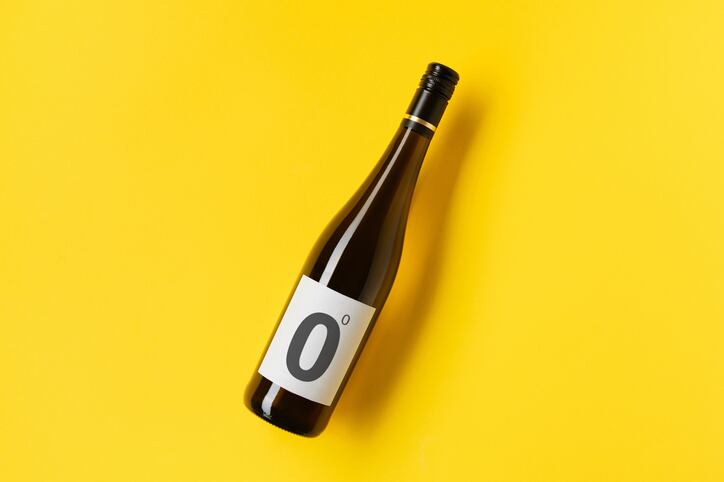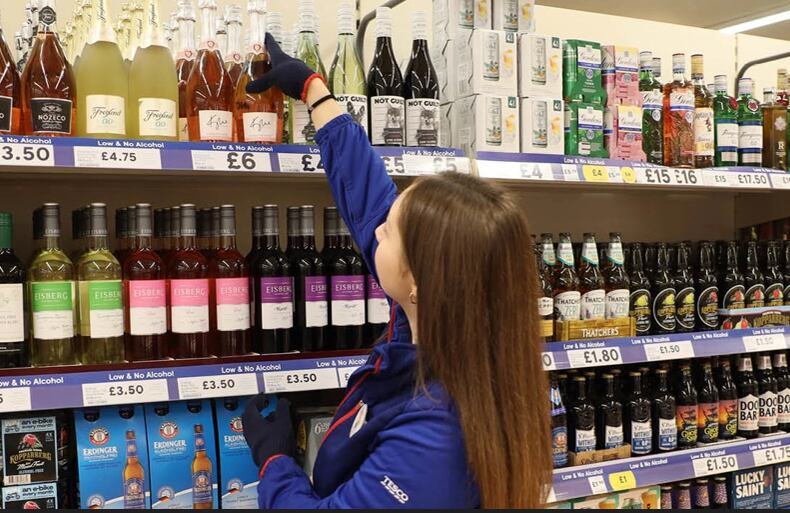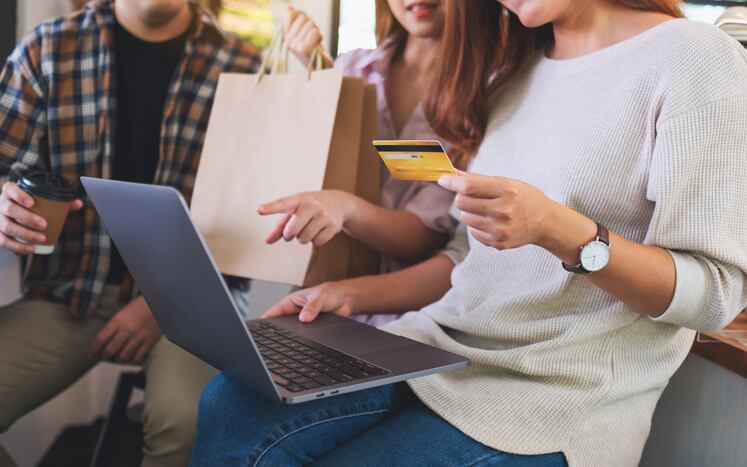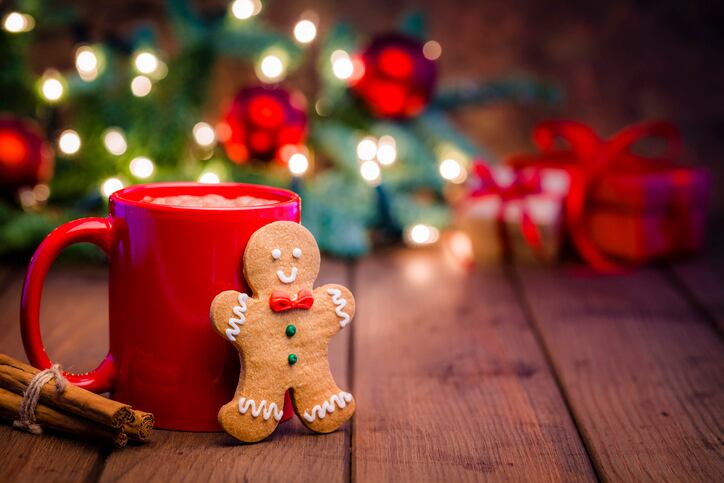You don't have to look far to see the alcohol-free category is growing: set to rise 7% globally from 2023-2027 (volume CAGR), according to IWSR figures.
Beer is by far the largest alcohol-free category: and in fact, a core proposition in more mature markets such as Germany and Spain. Alcohol-free spirits are a small but fast-growing category: propelled forward by the cocktail craze. But where does wine fit in?
Why has alcohol-free wine been slower to take off?
At the moment wine makes up just 3% of the global alcohol-free category: skewed towards sparkling (2%) rather than still (1%), according to figures from market analysts IWSR.
But the category is growing: the alcohol-free sparkling wine market was up 7% in 2023 (compared to 2022), and still wine up 6%.
(That's also a different story to the traditional wine market: where global consumption is falling and has been for some years)
Creating an alcohol-free wine is a far greater technical challenge than creating an alcohol-free beer. In beer, the inclusion of hops and barley ensures the beer cues are carried over into the alcohol-free beer: an advantage that simply doesn’t work the same way in wine. Meanwhile, the delicate flavors of grapes react far less favorably to dealcoholisation: often losing much of their character.
That means there’s a huge ongoing technical journey in the space: but one that’s starting to reap rewards.
“As more producers come into the space, and dedicated alcohol-free ones at that, we’re spending more time exploring different varietals that are best suited to de-alcoholisation and working closely with the technology providers to understand how the wines change through de-alcoholisation,” notes Luke Hemsley, founder of UK alcohol-free wine Wednesday’s Domaine.
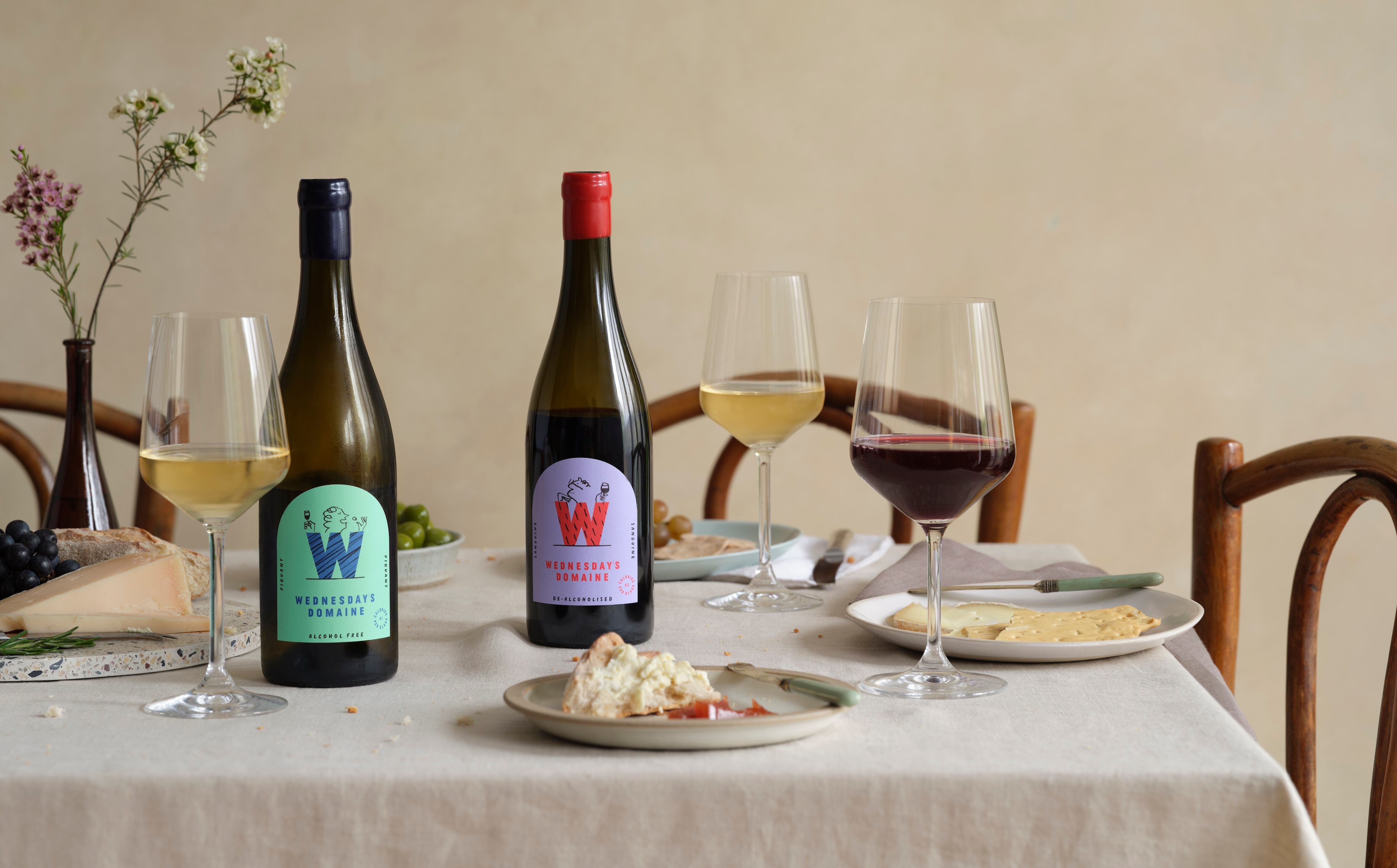
Another problem for the alcohol-free wine category, compared to alcohol-free beer, has been the lack of large, powerful alcohol-free wine brands with large marketing budgets to raise the profile of the category as a whole.
In fact, 83% of low/no drinkers say they first tried an alcohol alternative through a product which shared branding with an alcoholic product, according to a YouGov poll in the UK. In beer, most big brands now offer a 0.0 version of their flagship brand - lending their brand equity to the alcohol-free version.
In wine, that big brand muscle simply isn't there is the same way: but the growing number of small entrepreneurial brands could be driving a shift.
“The influx of independents is also awakening the larger players to the opportunity, creating a virtuous cycle of investment in both technology and advertising,” continues Hemsley.
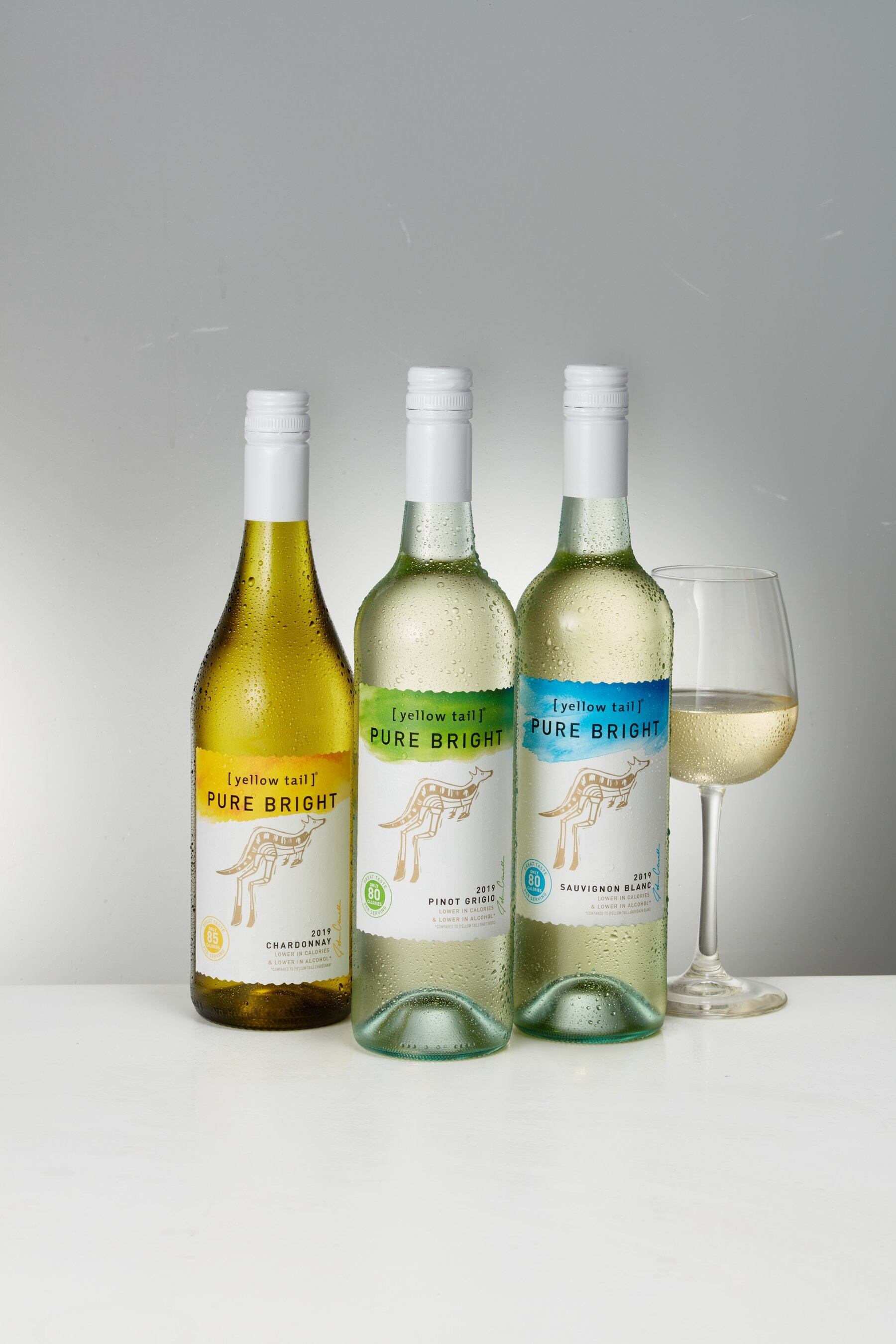
“In much the same way that independents like Lucky Saint [UK alcohol-free beer] stand to benefit from the likes of Heineken and Peroni sponsoring international sporting events, we’ll benefit from international wine brands extending their No&Low ranges and shining a light on the space.”
Australian mega-brand Yellow Tail, for example, has started to explore the category with the launch of lower alcohol brand Pure Bright. Its Sauvignon Blanc has an ABV of 8.5%, compared to 11.5% for the brand's core version.
From tradition to innovation
While the beer category has long been characterized by the creativity of craft, the wine category is steeped in tradition: meaning that prompting an eagerness to innovate has been more difficult.
Here, new world wine countries have spotted an opportunity to get ahead of the game. Australia – already proudly the home of the spinning cone technology often used in alcohol-free wine – is one of them.
Spinning cone technology
The spinning cone technology removes the alcohol and then ‘rebuilds’ flavors with a blend of tannins, mannoproteins, grape must or grape skin.
Australian Vintage – one of Australia’s largest wine producers which crushes around 7% of total annual production in the country – considers itself as a pioneer in low/no wine production: with such wines already accounting for around 10% of sales.
"Australia has a clear opportunity to lead the world in NoLo wine research and development, as it has done in other areas of viticulture and oenology," explained Jamie Saint, the company’s chief winemaker.
"The Australian wine industry is progressive, innovative, and not afraid to push boundaries and bring new wine styles to the world.”
In fact, a research grant of nearly $3m AUD ($2m USD) from the federal government is allowing Australian Vintage to tackle one of the wine category’s biggest challenges head-on: making the finished product as close to a wine as full-strength as possible. That includes considering everything from the flavor and mouthfeel to microbial stability and shelf-life; and through to consumer perceptions of the category.
New Zealand, similarly, believes its cool, maritime climate makes it ‘the best place on earth’ to create full flavored, lighter in alcohol wines: because the climate allows slow ripening grapes to boast the flavor without the same level of natural grape sugar that would ultimately ferment into alcohol. Its NZ Lighter Wines initiative dates back to 2008 when the country spotted an opportunity to start getting ahead of the game (for context, Dry January wasn't launched in the UK until 2013).
While the country’s NZ Lighter Wines initiative focuses on low rather than no alcohol wines (those at 10% ABV or under), it enjoys the backing of big players such as Pernod Ricard, Accolade Wines and Constellation Brands; as well as alcohol-free specialists such as Giesen.
What should an alcohol-free wine taste like?
Some brands set out to replicate the experience of drinking wine: with the same body, aromas and mouthfeel.
Others take the attitude that products should not get too hung up on creating an identical product.
“I believe that you have to approach non-alcoholic wine as almost a new offering entirely,” says Amanda Thomson of alcohol-free wine alternative Noughty.
“It takes its inspiration from its original form which is an alcoholic wine, but then offers you something new, which is a lighter more delicate experience, but yet nonetheless engaging and moreish.”
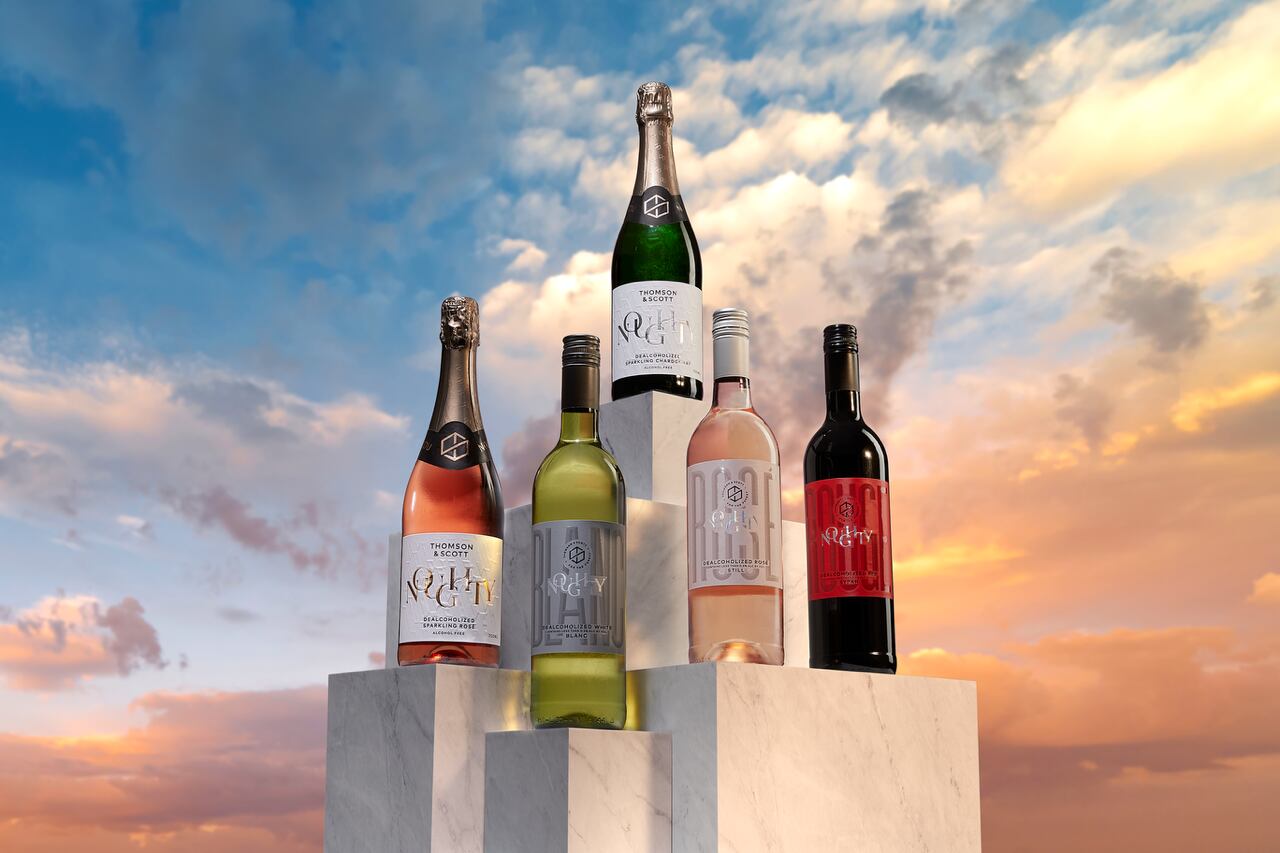
For Ryan Hanson, co-founder of US non-alcoholic wine Surely, the truth is simply in the eye of the beholder.
“Our core objective is to create enjoyable experiences for those who love wine but want to consume less alcohol,” he said. “We don’t necessarily want to go head to head with alcoholic wine and message to the customer - “hey we taste exactly like this alcoholic wine that you like so try this!”
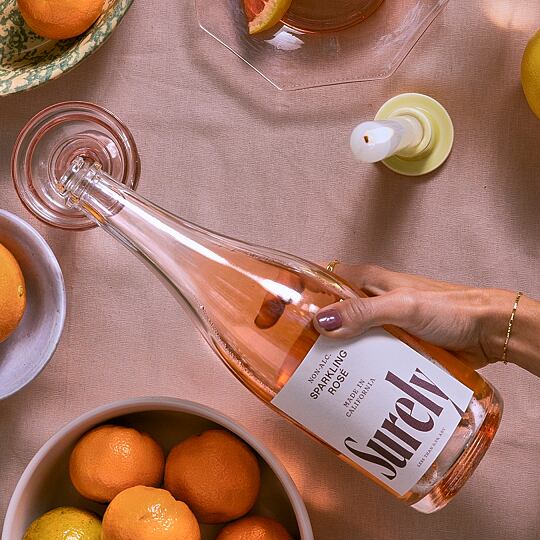
“Some of our customers think they’ve found their 1:1 wine match with Surely. Others don’t think it reminds them of a specific wine but love it for what it is. And some people don’t like our stuff - and that’s okay too!
“We wish to be judged by the complexity of the flavors we create, not a comparison to anything else. We strive to craft unique taste profiles that will carry a variety of interpretations.”
There is also a difference between dealcoholized wine (which has begun life as a traditional alcoholic wine) and wine alternatives (which can be made up over elements such as grape must, citrus fruits or be based on fermented drinks such as kombucha, kvass and kefir) – and thus carry different flavor profiles.
Education is key
Across the alcohol-free category, brands face the challenge of changing perceptions of inferior products built up over years of bad experiences.
It’s particularly pertinent in the wine category, where – because of the technical challenges – products in the past have been particularly disappointing.
“Tasting brands like mine really changes the game,” observes Thomson of Noughty. “I can talk about how good it is: but until you taste, how can you really know?”
And consumers also need to know how to drink these wines at their best. Alcoholic red wine is usually drunk at room temperature: but non-alcoholic red wines are often recommended to be drunk slightly chilled.
Chilling the wines helps enhance fruity notes, making them more profound and refreshing, while cooler temperatures also make the acidity livelier. That results in a crisp and lively taste on the palate, notes UK specialist alcohol-free wine retailers ZeroZilchZip.
And it appears that - with the buzz around low and no - consumers are showing increased willingness to give the category a try.
Data from Kantar shows that in the UK - a country where the alcohol-free movement is particularly on trend - consumer spend in the non-alcoholic wine category has risen 50% over the last three years (across both still and sparkling wine, consumer spend was at £44m in 2020 but reached £66.2m last year).
Be on-the-ball with the on-trade
A growing number of wine brands are now convincing bars and restaurants to stock alcohol-free wine: and this could prove to be a game-changer for the category.
UK alcohol-free sparkling wine Wild Idol, for example, has found its place in Michelin restaurants where its premium product fits perfectly with the upmarket dining experience.
So has Wednesday’s Domaine: with founder Hemsley finding that many restaurants have surprisingly forward-thinking sommeliers and bar managers who are ‘constantly on the lookout for products to pair with their food menus.’
For Amanda Thomson – who used her experience at the Cordon Bleu School to create alcohol-free wine alternative Noughty - pairing food and non-alcoholic wine is a win-win opportunity for restaurants and brands alike.
“Wider hospitality must recognise the missed margin opportunity without a quality n/a wine on their list,” she says. “Data shows these wine drinkers go home early or switch to tap water at best. The money lost is not just on the drink itself but also on the dessert or cheese they might have ordered if they’d have stayed.”
And – like the alcohol-free category as a whole – diners are happy to consider switching between alcohol and alcohol-free products, she says.
“The majority of our customers are wine lovers who use us to balance their alcohol intake. Restaurants that build Noughty into a traditional 'by the glass' list really allow it to shine as customers can take one or two glasses of their favorite alcoholic wine and then seamlessly transition to Noughty.”

